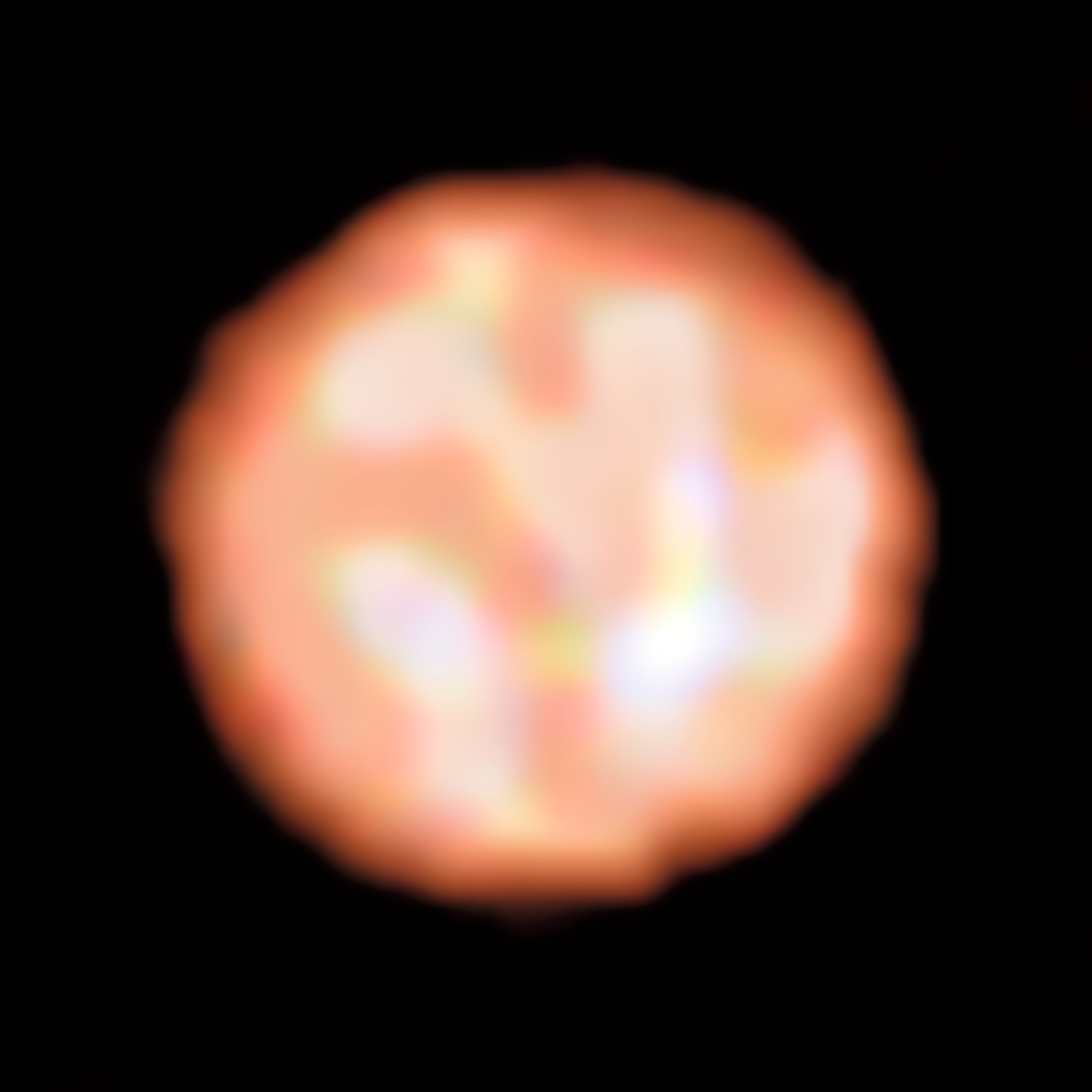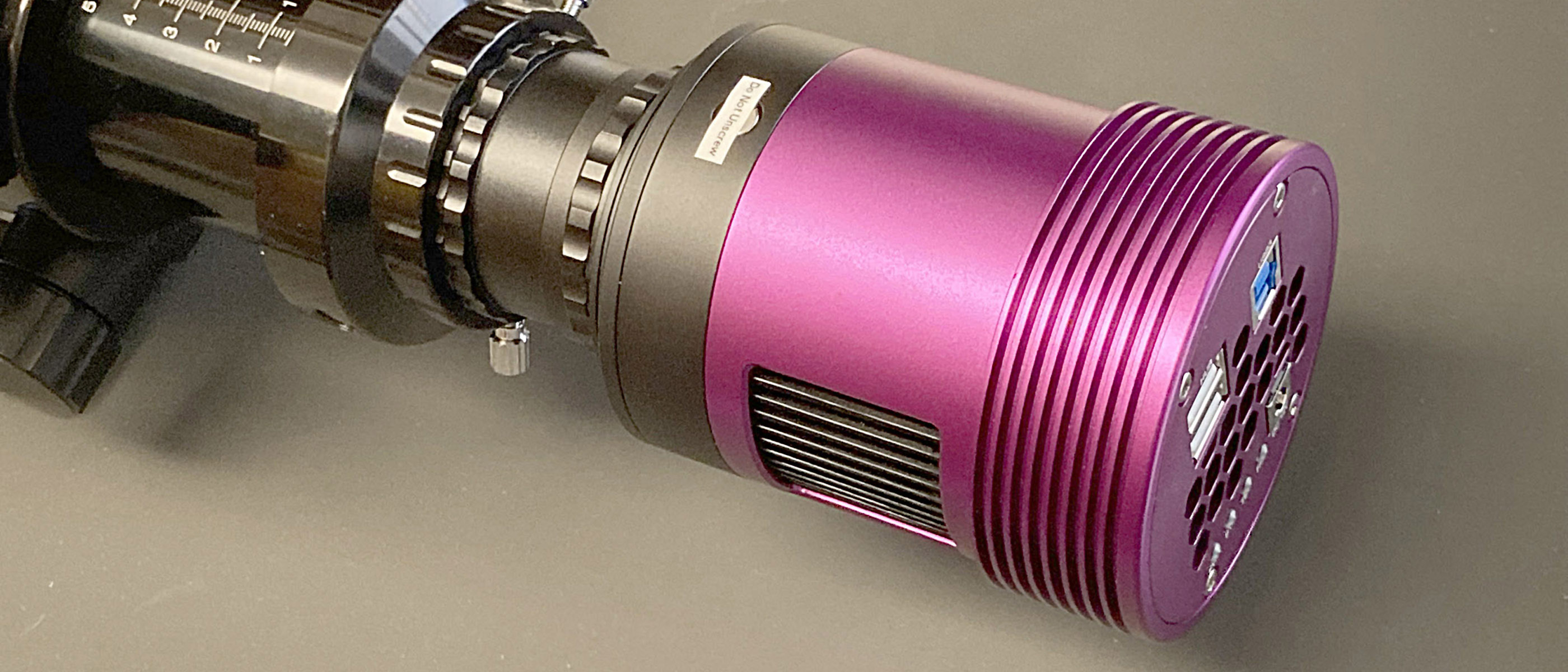New Image Reveals Enormous Bubbles Across Red Giant Star's Surface
Astronomers spotted giant bubbles on the surface of a huge red-giant star, showing for the first time the convective cells that move heat around in these enormous objects.
The star is called Pi1 Gruis, and it is 350 times the diameter of our own sun — not to mention, much brighter than Earth's star. Pi1 Gruis is a red giant, a type of object that forms when stars about the mass of the sun run out of hydrogen to burn and therefore swell up. Pi1 Gruis resides about 530 light-years from Earth, in the constellation Grus (the Crane). [How to Tell Star Types Apart (Infographic)]
"When Pi1 Gruis ran out of hydrogen to burn long ago, this ancient star ceased the first stage of its nuclear fusion program. It shrank as it ran out of energy, causing it to heat up to over 100 million degrees Celsius [212 million degrees Fahrenheit]," European Southern Observatory officials said in a statement. The observatory's Very Large Telescope obtained images of the star's surface.

"These extreme temperatures fueled the star's next phase as it began to fuse helium into heavier atoms such as carbon and oxygen," ESO officials said. "This intensely hot core then expelled the star's outer layers, causing it to balloon to hundreds of times larger than its original size. The star we see today is a variable red giant. Until now, the surface of one of these stars has never before been imaged in detail."
Pi1 Gruis has a few visible convective cells that are about 75 million miles (120 million kilometers) across. (A convective cell is a region on a star where matter is warmed from the star's internal heat and rises to the surface; on the surface, the material cools since it is close to cold space and then sinks again. This motion cycle is called convection.)

If we were to put one of these convective cells from 1 Gruis in our own solar system, it would extend from the sun to beyond Venus' orbit. Our sun's convective cells, by contrast, are only about 930 miles (1,500 km) across. ESO stated the size difference comes from the stars' different surface gravities. Because Pi1 Gruis has only 1.5 times the mass of the sun but is so much larger, it has a lower surface gravity and only a few, large bubbles.
The observation team, which was led by ESO astronomer Claudia Paladini, noted that it was fortunate that the surface of Pi1 Gruis was visible, because many of the surfaces (or photospheres) of giant stars are blocked by dust. There is dust in the system of Pi1 Gruis, but it's far enough away from the star that this material does not significantly affect observations, the researchers said.
Get the Space.com Newsletter
Breaking space news, the latest updates on rocket launches, skywatching events and more!
After the red giant phase, stars like Pi1 Gruis and our sun will eventually shed their outer layers and become planetary nebulas. (Stars that explode as supernovas are much larger, at more than eight solar masses.) A previous study of Pi1 Gruis found material located about 0.9 light-years away from the star and ejected roughly 20,000 years ago.
Follow us @Spacedotcom, Facebook and Google+. Original article on Space.com.
Join our Space Forums to keep talking space on the latest missions, night sky and more! And if you have a news tip, correction or comment, let us know at: community@space.com.

Elizabeth Howell (she/her), Ph.D., was a staff writer in the spaceflight channel between 2022 and 2024 specializing in Canadian space news. She was contributing writer for Space.com for 10 years from 2012 to 2024. Elizabeth's reporting includes multiple exclusives with the White House, leading world coverage about a lost-and-found space tomato on the International Space Station, witnessing five human spaceflight launches on two continents, flying parabolic, working inside a spacesuit, and participating in a simulated Mars mission. Her latest book, "Why Am I Taller?" (ECW Press, 2022) is co-written with astronaut Dave Williams.










